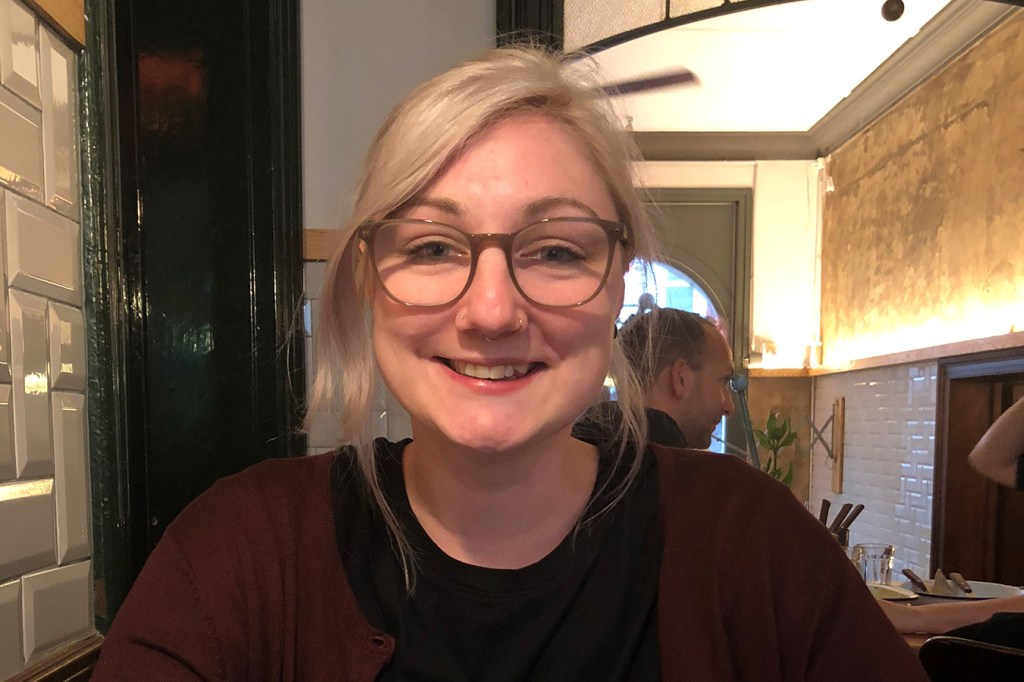KHN correspondent Shefali Luthra reported this story from Germany as a 2019 Arthur F. Burns Fellow.
HAMBURG, Germany ― Every now and then, Katie West considers returning to the United States. She moved to Germany for graduate school three years ago and now works as a health systems researcher in Hamburg. Her family is an ocean away. Then she remembers why she stays.
West, 30, has had Type 1 diabetes since she was 3. Back in Seattle, where she used to live, she typically paid $70 per month for insulin and another $130 for pump supplies. That was a relative steal in the U.S., made possible by her excellent health insurance, which she got through her employer. But still, it was a financial strain.
In Germany, she pays about 10 euros, roughly $11. Every three months.
“I don’t ever have to worry,” she said. “There is not a day I ever have to worry about if I can pay for something, or manage something.”
The price of insulin has increased globally in recent years, but no high-income country has felt the impact as acutely as the U.S., where the cost has more than doubled since 2012, going from an average $344 per prescription that year to $666 in 2016, according to the Health Care Cost Institute, and continually climbing since. Like Germany, many Western nations, including England and Canada empower their governments to actively negotiate prescription drug prices, which has held consumer costs in check. (The U.S. has no such system in place.)
Last year, over 10% of American adults with diabetes rationed their insulin, according to research by the Centers for Disease Control and Prevention. That doesn’t account for people who kept paying for medication but skimped on other things, like groceries.
West, like 90% of German residents, is on one of the country’s many public insurance plans, which are administered through nonprofit insurance companies. She pays for that benefit: Maybe a third of her paycheck is withheld each month for taxes, health care and other social services. But in exchange, the coverage — including that of prescription drugs — is generous.
Germany has an easier time financing prescription coverage because these drugs cost less there. When a new drug comes to the German market, an independent panel assesses its effectiveness and whether its treatment value is commensurate with the manufacturer’s proposed price. Drugs serving a similar purpose or delivering the same benefit get grouped together. The panel sets a maximum price that insurers will pay for these medications ― a practice known as “reference pricing.” Since most German residents are on public health insurance plans, and these plans are tightly regulated, there aren’t many ways for insurance providers to compete with one another. One option they do have, however, is to negotiate lower prices on prescription meds with drug manufacturers.
German law requires public plans to cap out-of-pocket health care costs and to cover all medically necessary treatment, including insulin. For people with chronic conditions — like West — the out-of-pocket limit is set at 1% of household income. For those without such a condition, out-of-pocket costs are capped at 2%. After you hit the limit, the plan pays the rest; that’s why West’s insulin costs are so low. In fact, German diabetes patients have some of the lowest out-of-pocket costs in the world for insulin, according to T1 International, an advocacy group for people with Type 1 diabetes.
Meanwhile, in the U.S., the climbing price of insulin has lit up both Capitol Hill and the 2020 presidential campaign trail, especially as voters say prescription drug prices are reaching “unreasonable” heights, and large majorities support government intervention, per October polling by the Kaiser Family Foundation. A KFF poll in February also showed that almost two-thirds of respondents supported more government regulation of drug pricing. (KHN is an editorially independent program of the foundation.)
Lawmakers in D.C. have proposed legislation to that effect, like the bipartisan “Insulin Price Reduction Act,” which specifically targets the diabetes drug, and the “Affordable Drug Manufacturing Act,” proposed by Democratic Sen. Elizabeth Warren, which includes regulating insulin pricing as one of a series of broader proposals. Legislators have also hauled in insulin manufacturers for congressional questioning, but these efforts have foundered in the face of congressional legislative inertia, partisan in-fighting over the best path forward and intense pharmaceutical industry lobbying.
Ken Inchausti, a Novo Nordisk spokesman, says a reference-pricing approach like Germany’s is incompatible with the American market. Instead of tackling drug prices, he said, policymakers should look at how insurance plans pay for insulin. A White House proposal first floated last fall to tie Medicare payments for some drugs to prices paid in European countries ― including Germany ― would do just that, at least for the public sector.
But that plan, which does align with ideas put forth by House Speaker Nancy Pelosi, has elicited vocal pushback from the pharmaceutical industry and other conservative groups, which have blanketed Washington in advertisements criticizing the proposal. Powerful Senate Republicans have come out against this idea as well, including Republican Senate Finance Chair Chuck Grassley of Iowa, who argued this summer it would hamper innovation.
Germany’s system isn’t perfect. West now pays more for basic over-the-counter medicines than for insulin, she said. She asks her family to bring her ibuprofen when they visit, for example, because the price she would pay in Germany is roughly double the U.S. price.
Still, West is happier in Germany overall. “Why would I go back? It’s thousands of dollars a year I’m going to have to spend on the same [insulin] I get here for nothing.”
The peace of mind alone makes it worth it. “A third of my income may go to taxes and health care here, but honestly, that’s fine. Take it. Take it!” she said. “I don’t have to worry.”
The fellowship is an exchange program for German, American and Canadian journalists operated by the International Center for Journalists and the Internationale Journalisten-Programme.







